- About MAA
- Membership
- MAA Publications
- Periodicals
- Blogs
- MAA Book Series
- MAA Press (an imprint of the AMS)
- MAA Notes
- MAA Reviews
- Mathematical Communication
- Information for Libraries
- Author Resources
- Advertise with MAA
- Meetings
- Competitions
- Programs
- Communities
- MAA Sections
- SIGMAA
- MAA Connect
- Students
- MAA Awards
- Awards Booklets
- Writing Awards
- Teaching Awards
- Service Awards
- Research Awards
- Lecture Awards
- Putnam Competition Individual and Team Winners
- D. E. Shaw Group AMC 8 Awards & Certificates
- Maryam Mirzakhani AMC 10 A Awards & Certificates
- Two Sigma AMC 10 B Awards & Certificates
- Jane Street AMC 12 A Awards & Certificates
- Akamai AMC 12 B Awards & Certificates
- High School Teachers
- News
You are here
Mathematical Treasure: Spanish Commercial Arithmetic
Antonio Bordazar de Artazu (1671-1744) was a Spanish printer and publisher. He was active in the scientific community of his region, Valencia, and published several arithmetic texts written by various authors. His own book, Proporcion de Monedas, Pesos, i Medidas [Proportions of Currencies, Weights, and Measures], was obviously composed for commercial needs. Published in 1736, it remained popular for many years.
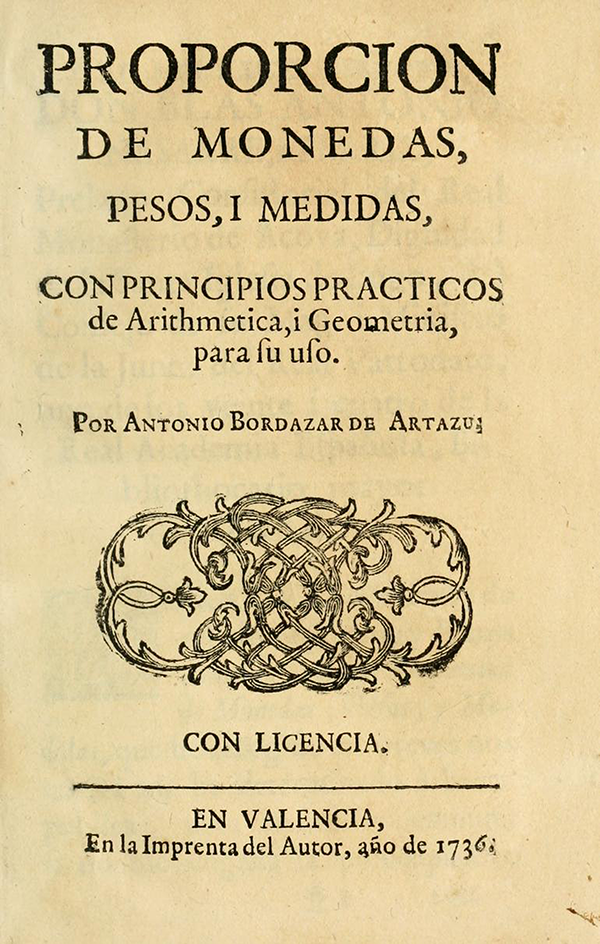
The text begins with a rather concise discussion of “Practical Arithmetic.”
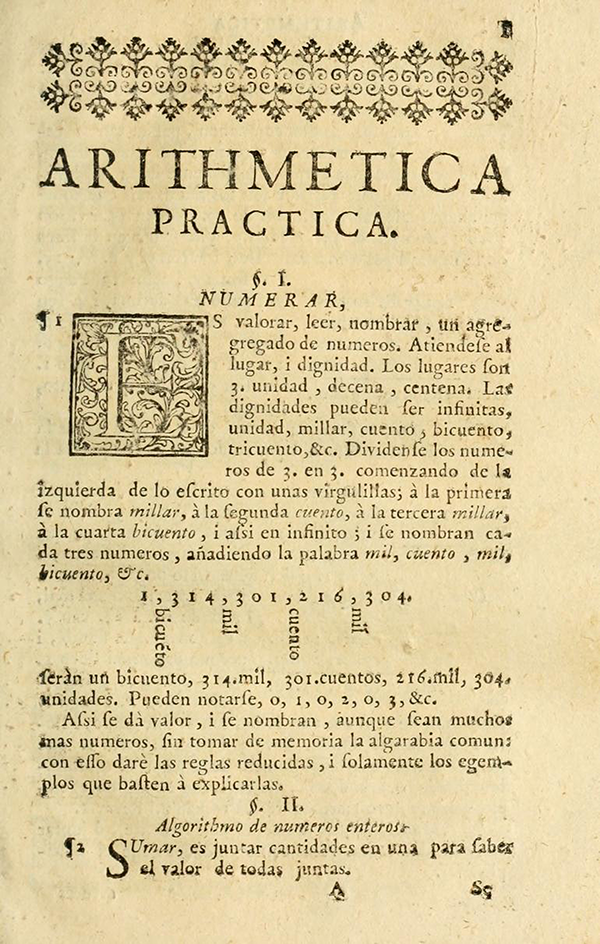
Early in this first section, de Artazu gave the various mathematical rules needed by merchants and tradesmen. On page 8, he discussed the “Rule of Three,” followed by the “Composite Rule of Three” (Section VI) and the “Inverse Rule of Three.”
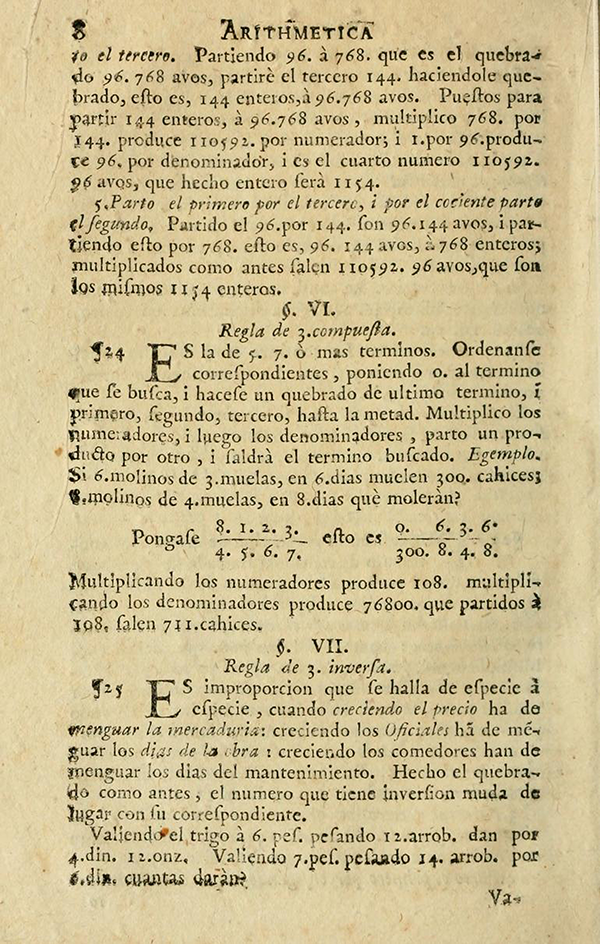
“Alligation" is considered in Section VIII on page 10:
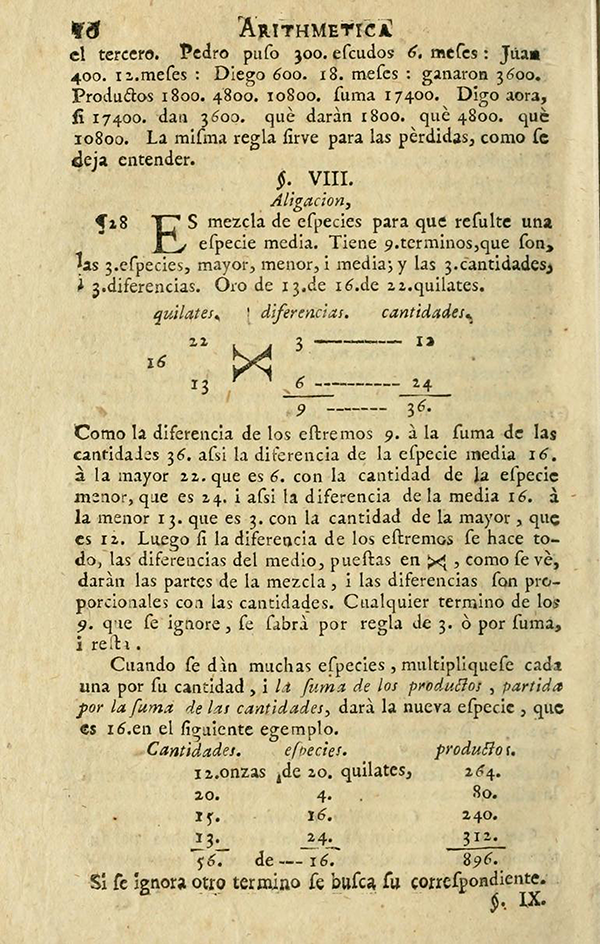
On page 18, two tabulations are given: addition facts and powers of numbers through the fifth power. The “Table of Addition Facts” is an "arithmetical triangle" or difference table: the sum of two adjacent numbers, vertically aligned, is (usually) found to the immediate right of the uppermost number, making the addition configuration a reflected “L”. For example, in the lower right hand corner of the table, 11 + 55 = 66 and 55 + 165 = 220. The columns of the table form the rows of a famous and familiar triangle.
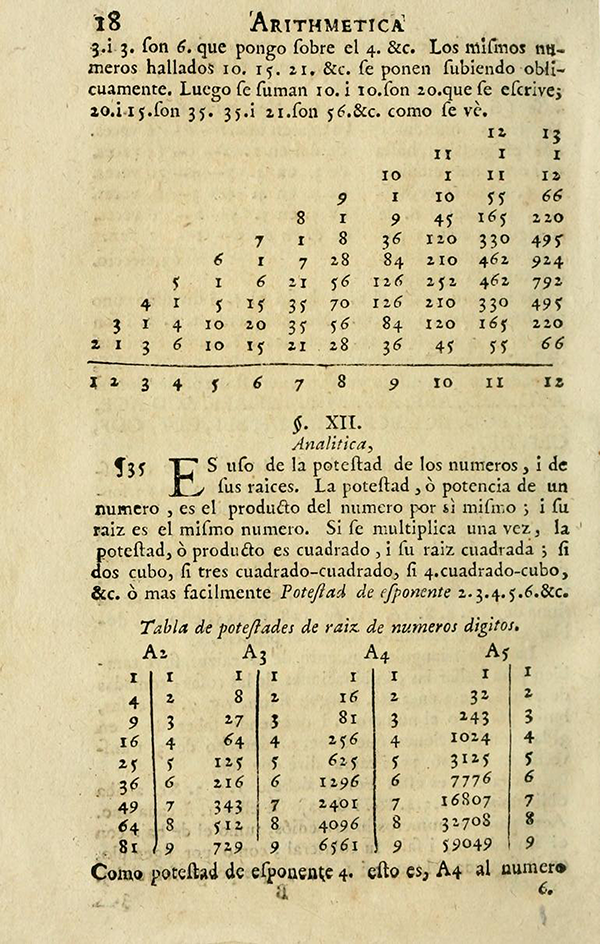
The consideration of “Practical Geometry” begins on page 23.
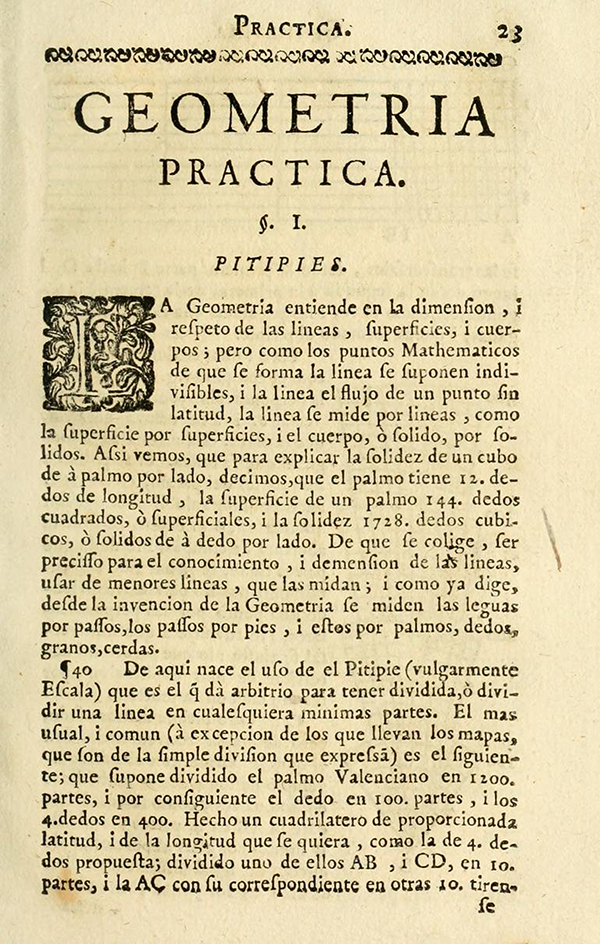
On pages 42 and 43, de Artazu demonstrated construction procedures for an ellipse or ovoid determined by two circles.

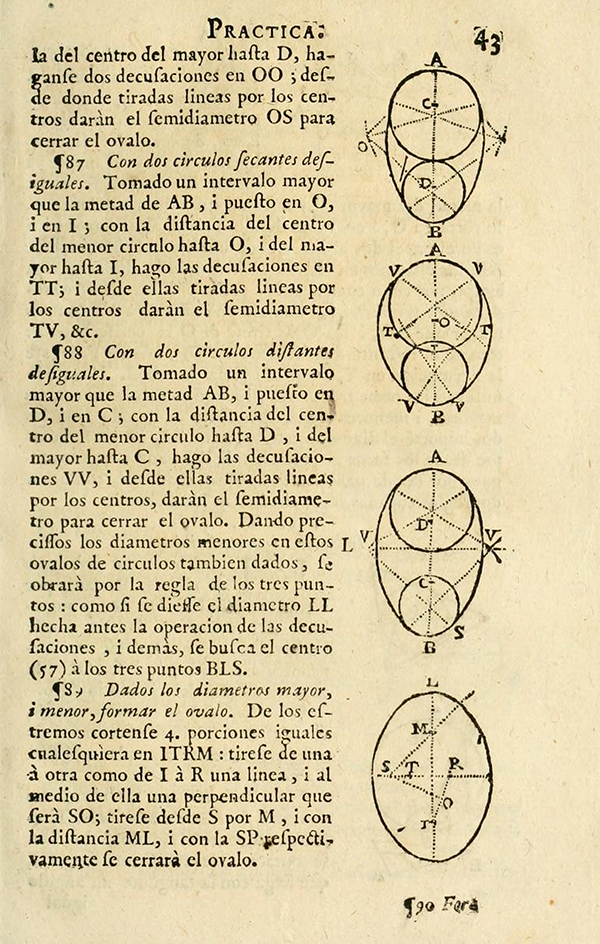
The images above were obtained through the courtesy of the University of California Libraries. A complete digital copy of this item can be viewed on the Libraries’ Internet Archive.
Frank J. Swetz (The Pennsylvania State University), "Mathematical Treasure: Spanish Commercial Arithmetic," Convergence (September 2016)




